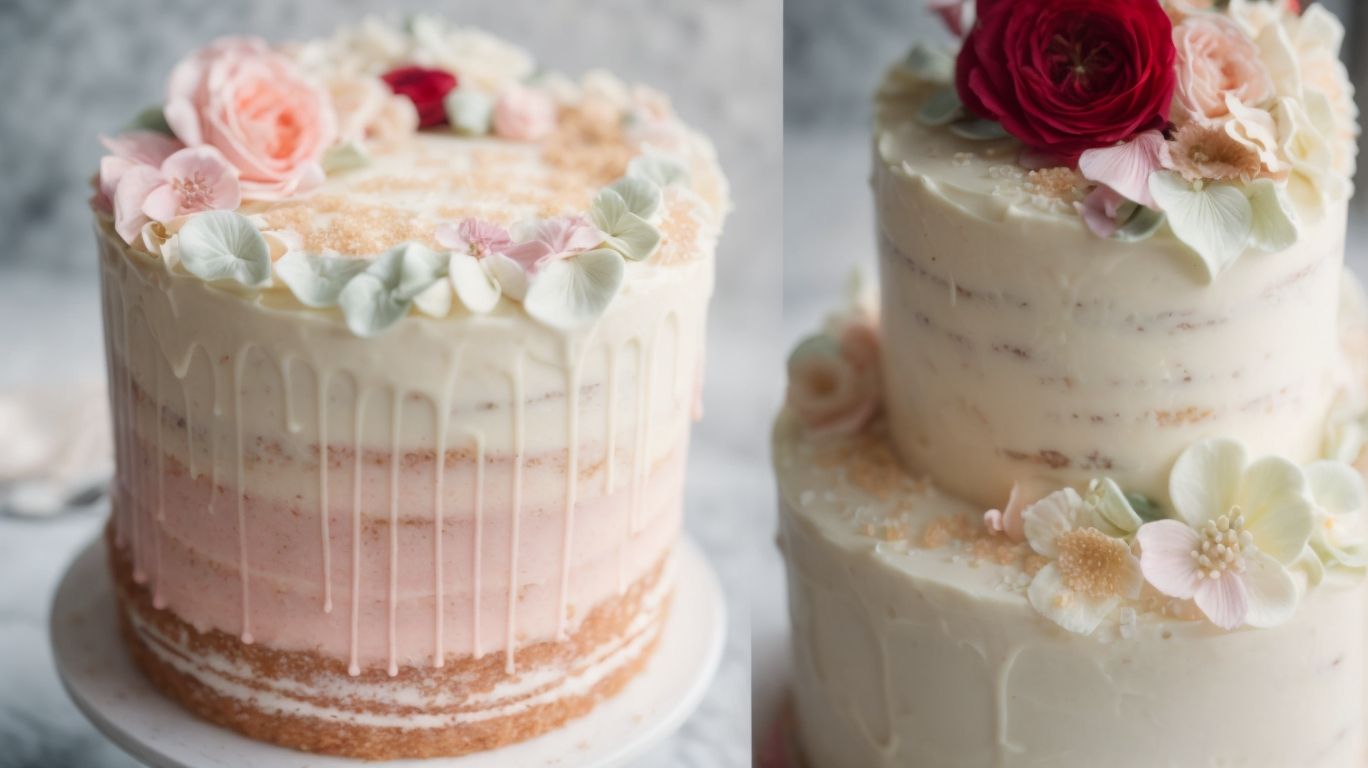How to Bake a Cake Without Vanilla Extract?
Are you wondering why you should bake without vanilla extract?
There are a few reasons why you might need to explore alternatives, such as allergies, running out of vanilla extract, or simply wanting to experiment with different flavors.
In this article, we will delve into what you can use instead of vanilla extract, how to adjust recipes for baking without it, and provide some tips for successful baking.
Get ready to enjoy your vanilla-free baked goods with these helpful insights!
Key Takeaways:
Why Bake Without Vanilla Extract?
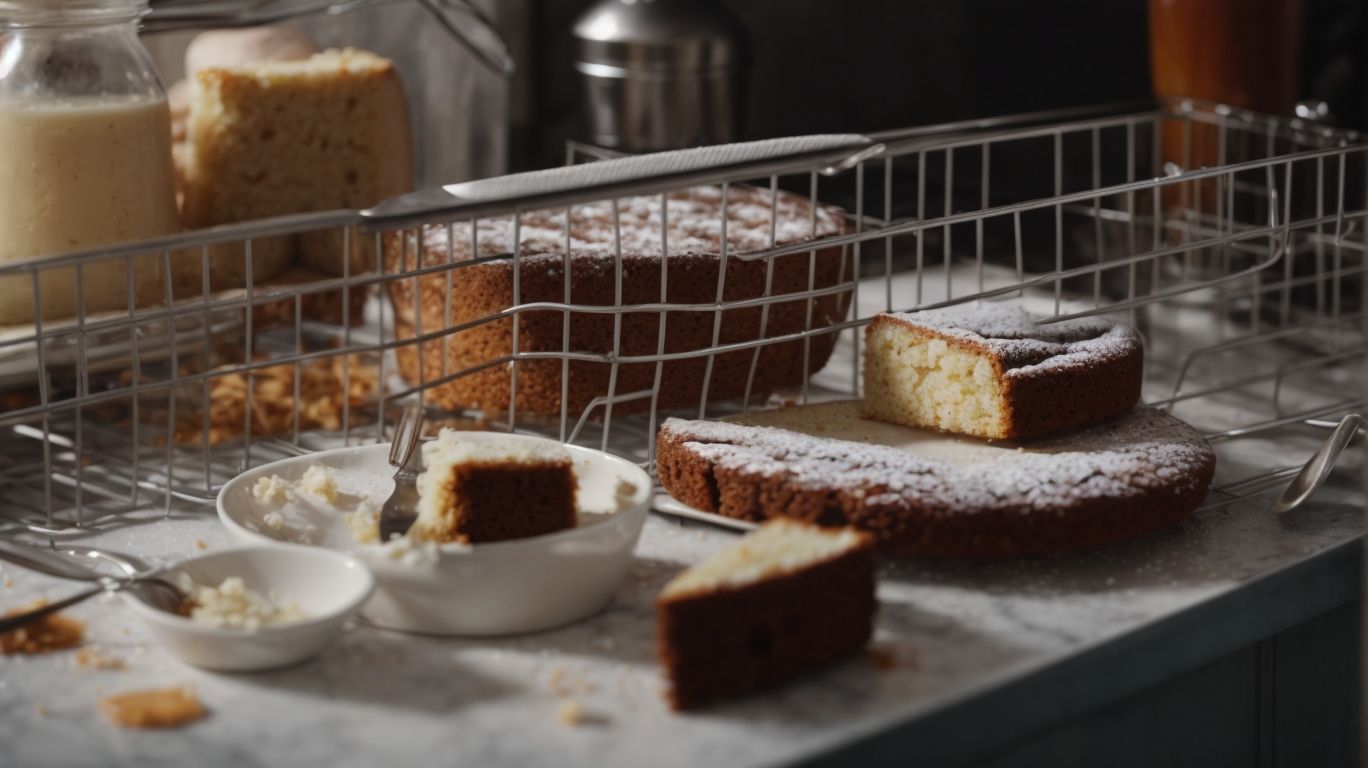
Credits: Poormet.Com – Austin Young
Baking without vanilla extract is sometimes necessary due to allergies, ingredient shortages, or the desire to experiment with different flavors.
In some cases, individuals may have allergies to vanilla or other ingredients in the extract, making it crucial to find substitutes that can still provide the desired flavor profile. During a shortage or if vanilla extract is not readily available, bakers must turn to creative flavoring options to achieve the same depth and richness in their baked goods. By exploring different flavoring agents such as almond extract, citrus zest, or even spices like cinnamon or nutmeg, one can unlock a world of new tastes in their recipes.
Allergy or Intolerance to Vanilla
Allergies or intolerances to vanilla can prompt the need to find suitable substitutes for vanilla extract in baking recipes.
Fortunately, there are several alternative options that can still impart a delightful flavor to your baked goods. Popular choices include almond extract, which adds a sweet and nutty essence, or maple syrup for a rich and earthy taste. Orange or lemon zest can bring a citrusy twist, while coffee extract offers a deep and robust flavor profile. Experimenting with cinnamon, nutmeg, or cardamom can also give your baked treats a warm and spicy aroma.
Out of Vanilla Extract
Running out of vanilla extract while in the midst of a baking session can lead to creative solutions like using vanilla beans or other flavorings.
If you find yourself without vanilla extract, don’t fret – vanilla beans are a fantastic alternative. Simply scrap the seeds from a vanilla bean pod and use them in place of the extract in your recipe. The intense, fragrant flavor of the vanilla bean will infuse your baked goods with a rich, authentic taste. You can experiment with alternative flavorings such as almond extract, maple syrup, or even citrus zest to add a unique twist to your recipe.
Experimenting with Flavors
Experimenting with flavors in baking can open up a world of possibilities beyond traditional vanilla extract, enhancing the culinary experience.
In terms of infusing new flavors into your baked goods, the options are truly endless. You can experiment with spices like cinnamon or nutmeg to add a warm, comforting touch to your recipes. Alternatively, try incorporating citrus zest for a burst of freshness, or extracts such as almond or mint for a unique twist.
Exploring different flavor combinations can truly elevate your baking game, bringing a whole new dimension to your favorite treats. Imagine a rich chocolate cake infused with a hint of coffee or a zesty lemon poppy seed muffin that wakes up your taste buds.
What Can I Use Instead of Vanilla Extract?
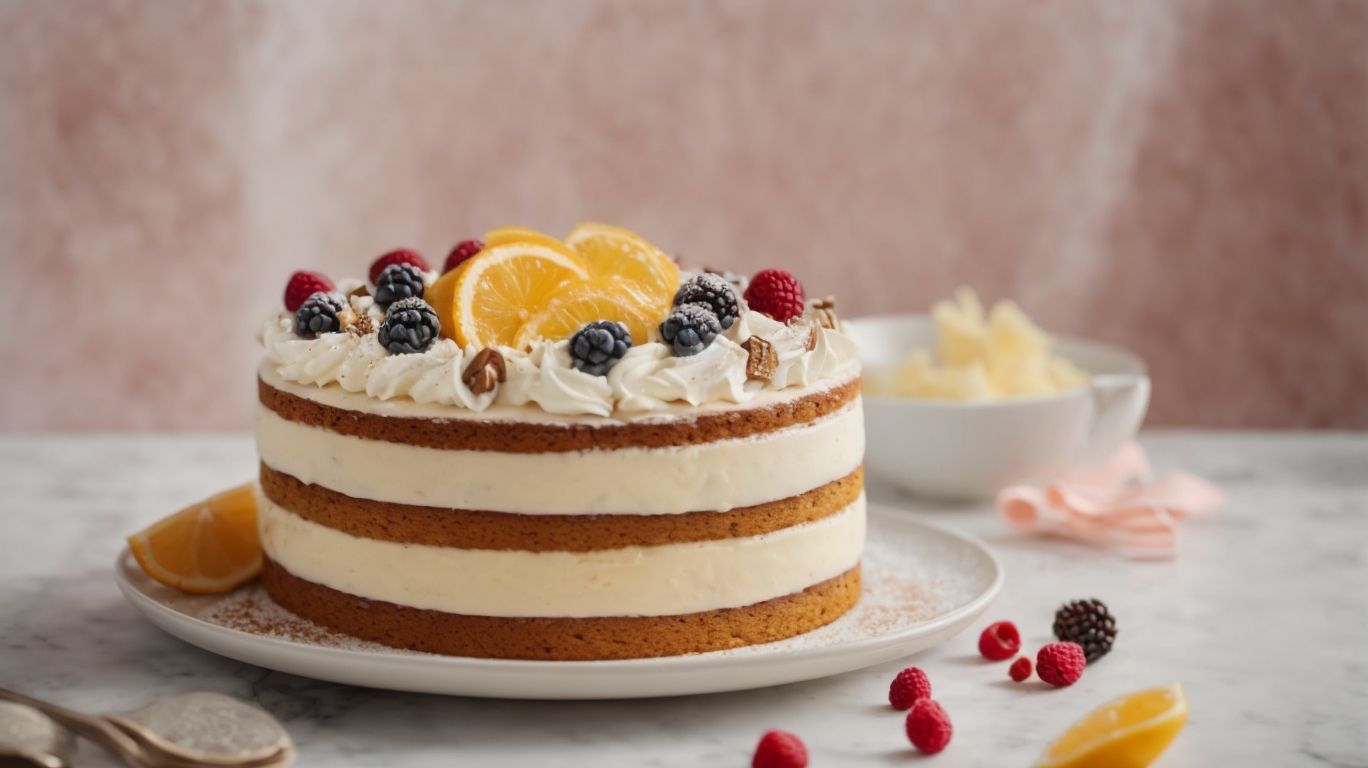
Credits: Poormet.Com – Jose Lee
When you need to substitute vanilla extract, several alternative options can provide similar flavor profiles and enhance your baked goods.
One popular option is almond extract, which adds a nutty and sweet flavor to your recipes. Another great choice is maple syrup, especially in recipes that would benefit from a hint of caramel-like sweetness. For a unique twist, consider using coconut milk as a substitute to impart a tropical undertone to your desserts.
If you’re looking for a non-alcoholic option, vanilla bean paste is a concentrated form of vanilla that can intensify the flavor without the alcohol content. Additionally, agave nectar can provide a natural sweetness with a mild vanilla essence.
When choosing a flavoring substitute, it’s essential to consider the specific flavor profile you want to achieve in your dish. Experiment with different options to find the perfect match for your baking needs.
Vanilla Bean
Using real vanilla beans can elevate the taste of your baked treats with a rich, aromatic essence sourced from regions like Madagascar or Tahiti.
Vanilla beans are the seed pods of the Vanilla orchid plant, known for their intense flavor and fragrance. Madagascar beans are popular for their creamy, sweet aroma with hints of dried fruit, while Tahitian beans are prized for their floral, fruity notes.
To substitute vanilla extract with beans, split a bean lengthwise and scrape out the tiny seeds to use in your recipe. You can also infuse the whole bean in liquids like milk or cream to extract maximum flavor. Remember to store unused beans in an airtight container to maintain their freshness and potency.
Vanilla Powder
Vanilla powder is a convenient alternative to liquid extract, imparting a robust vanilla flavor to your baking recipes with ease of use and storage.
One of the key benefits of using vanilla powder is its longer shelf life compared to liquid extracts, ensuring that you always have a reliable vanilla flavor on hand without worrying about expiration dates.
This powder is highly potent, so you only need to use a small amount to achieve a rich and intense vanilla taste in your baked goods.
When substituting vanilla powder for extract, keep in mind that it is more concentrated, so start by using half the amount called for in the recipe and adjust to taste.
Almond Extract
Almond extract offers a nutty and sweet flavor that can replace vanilla extract in recipes, adding a unique twist to your baked goods.
Its intense aroma and rich taste make it a popular choice for elevating the flavor of cookies, cakes, and pastries. Almond extract pairs exceptionally well with fruits like cherries and apricots, enhancing the overall taste profile with a subtle nuttiness.
When using almond extract in baking, remember that a little goes a long way due to its concentrated nature. Start with a small amount and gradually adjust to achieve the desired flavor intensity.
Maple Syrup
Maple syrup can bring a delightful sweetness and depth of flavor to baked goods as a substitute for vanilla extract in various recipes.
One popular application of maple syrup in baking is in homemade granola bars where its unique flavor profile pairs perfectly with oats, nuts, and dried fruits. You can use maple syrup to sweeten muffins, cakes, and cookies, adding a touch of richness and complexity to the final products.
For those looking to experiment further, consider incorporating maple syrup into savory baked goods like cornbread or glazing meats for a sweet and savory twist. You can also create a maple-infused glaze for donuts or cinnamon rolls, elevating these treats with a subtle maple note.
Honey
Honey not only adds sweetness but also imparts a distinct floral note, making it a flavorful alternative to vanilla extract in baking recipes.
Along with its unique flavor profile, honey also boasts natural sweetening properties and offers health benefits due to its antioxidant and antibacterial properties. When used in baking, honey can lend a subtle complexity to dishes while enhancing the overall taste with its delicate floral nuances.
To incorporate honey into your baking creations, you can use it to sweeten bread, muffins, or cakes, drizzle it over desserts like tarts and pies, or even infuse it in glazes and marinades for a rich and aromatic touch.
Citrus Zest
Citrus zest from lemons, oranges, or limes can infuse your baked goods with a refreshing and tangy flavor, offering a vibrant alternative to vanilla extract.
Citrus zest is the colored outer part of the citrus fruit’s skin, known for its intense aroma and citrusy essence.
Lemons provide a bright, zingy flavor, while oranges offer a sweeter, more mellow profile. Limes bring a tart and exotic twist to your recipes.
To incorporate this zest creatively in baking, consider adding it to sugar cookie dough for a hint of citrus or mixing it into glazes for cakes, creating a delightful balance of sweet and tangy flavors.
Spices (Cinnamon, Nutmeg, etc.)
Spices like cinnamon, nutmeg, or cardamom can add warmth and complexity to your baked treats, serving as aromatic alternatives to vanilla extract.
Each spice brings its unique flavor profile to the table. Cinnamon, with its sweet and woody notes, is perfect for enhancing the taste of apple pies or oatmeal cookies. Nutmeg, known for its warm and slightly nutty taste, pairs beautifully with creamy desserts like custards and puddings.
For a touch of exotic flair, consider using cardamom in your baked goods – its floral and citrus undertones work wonders in pastries and cakes. Combining these spices can create a symphony of flavors; try a blend of cinnamon and nutmeg for a classic spice cake, or mix cardamom with cinnamon for a delightful twist on sugar cookies.
When substituting spices for vanilla extract, start with smaller amounts and adjust to taste. A general rule of thumb is 1/2 to 1 teaspoon of ground spice per teaspoon of vanilla extract called for in your recipe. Remember, spices can be strong, so it’s better to start conservative and add more gradually to avoid overpowering your dish.
Other Extracts (Coconut, Mint, etc.)
Exploring alternative extracts like coconut or mint can introduce exciting new flavors to your baked goods, offering a creative departure from traditional vanilla extract.
Coconut extract brings a tropical sweetness to your baked treats, perfect for enhancing fruity flavors like pineapple or mango in cakes or muffins. On the other hand, mint extract adds a refreshing and invigorating twist, ideal for pairing with chocolate in brownies or cookies.
Consider adding coconut extract to your coconut macaroons for an extra boost of tropical goodness, or infuse mint into your chocolate chip cookies to bring a mint-chocolate sensation. Both extracts can elevate your baking repertoire and surprise your taste buds with delightful and unique combinations.
How to Adjust Recipes for Baking Without Vanilla Extract?
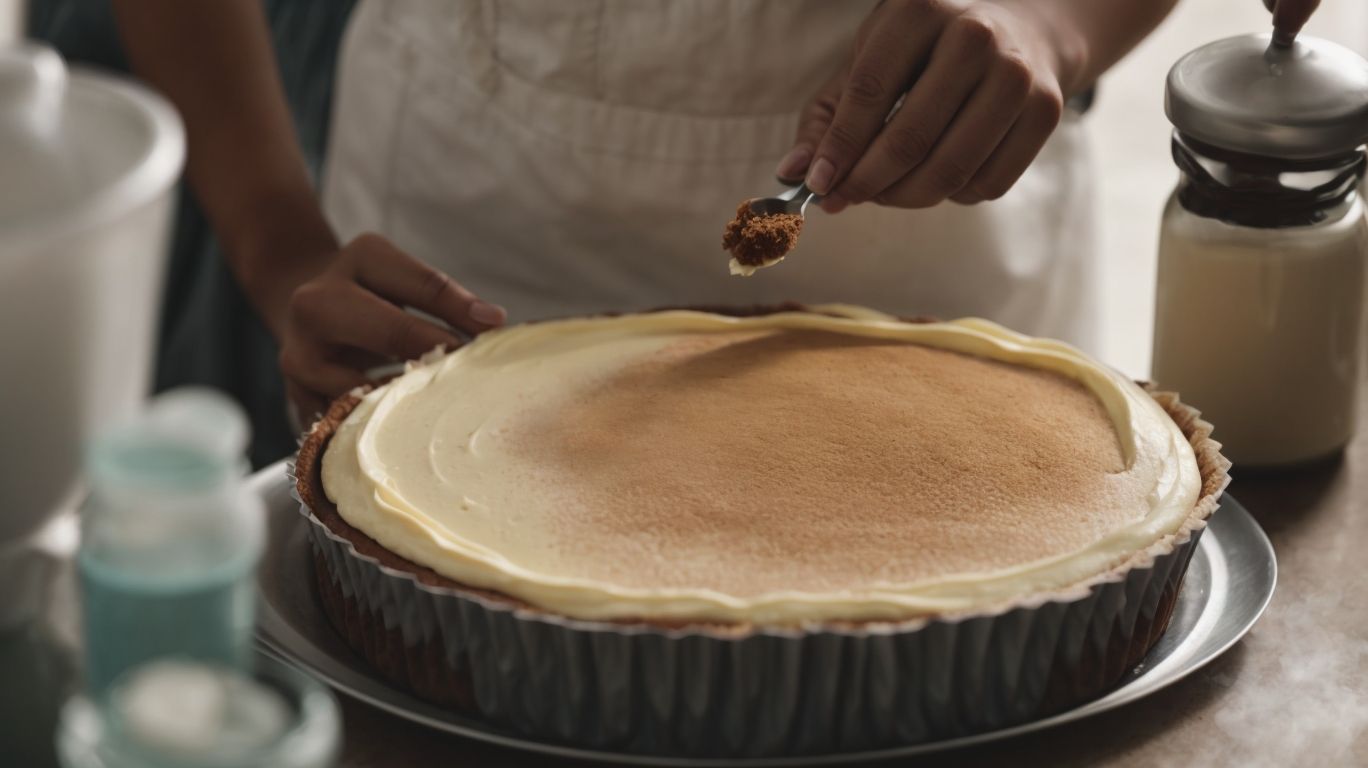
Credits: Poormet.Com – Jose Roberts
When omitting vanilla extract from recipes, adjusting ingredient quantities and incorporating additional flavor enhancers can maintain the desired taste and aroma in your baked creations.
One effective method to substitute vanilla extract is by using vanilla bean paste which carries a rich flavor and visible specks of vanilla seeds.
You can also experiment with almond extract for a nutty undertone or maple syrup for a sweet depth.
Another trick is to add a touch of citrus zest such as lemon or orange to brighten the overall flavor.
To preserve the essence of vanilla, consider infusing milk or cream with vanilla pods before adding them to the recipe for a subtle yet distinct vanilla touch.
Use Half the Amount of Substitute
When substituting vanilla extract, aim to use half the amount of the alternative flavoring to achieve a balanced taste in your baking recipes.
Adjusting the quantity of substitutes in baking is a delicate process that can greatly impact the final outcome of your dish. Different flavorings vary in strength and intensity, so it’s crucial to maintain the right balance. For instance, if you’re using almond extract as a substitute, you would typically use half the amount compared to vanilla extract, as almond extract tends to have a more potent flavor profile.
For other flavorings like lemon or peppermint extract, you may need to adjust the ratio based on personal preference and the recipe’s requirements. It’s recommended to start with small increments, taste as you go, and make adjustments accordingly.
Reducing the amount of flavoring can alter the taste and aroma of your baked goods significantly. Too much of a strong flavoring can overpower the other ingredients, resulting in an unbalanced final product. Conversely, using too little can leave your dish lacking that desired flavor profile. Experimenting with different proportions and understanding the impact can help you fine-tune your recipes to perfection.
Add More Flavor Enhancers
Enhance the flavor profile of your baked goods by incorporating additional flavor enhancers like spices, extracts, or citrus zest when substituting for vanilla extract.
When exploring alternatives to vanilla extract, consider using cinnamon for a warm and fragrant touch, almond extract for a nutty sweetness, or orange zest for a zesty kick. You can also experiment with nutmeg or cardamom to add depth and complexity to your treats.
To create unique flavor combinations, try blending ginger and lemon zest for a refreshing twist, or mix maple syrup with nut extracts for a rich, indulgent taste. For a tropical flair, combine coconut and pineapple juice to transport your taste buds to an exotic destination.
Adjust Other Ingredients (Sugar, Salt, etc.)
Fine-tuning the proportions of sugar, salt, or other ingredients in your recipes can help harmonize the flavors when vanilla extract is substituted with alternate flavorings.
When adjusting the sugar levels, consider the sweetness of your substitute flavor – a tangy addition may require a touch more sweetness. Experiment with substituting honey, maple syrup, or fruit purees for sugar, keeping in mind their unique taste profiles.
For balancing salt, remember that it enhances sweetness. Try increasing or reducing salt slightly based on the savory or sweet notes of your chosen alternative extract.
If richness is lacking without vanilla, consider using additional butter or a nut butter for depth and creaminess in your baked goods.
Tips for Baking Without Vanilla Extract
Navigating the world of baking without vanilla extract requires creativity, precision, and a willingness to explore diverse substitutes and flavor enhancers for delightful results.
“
When embarking on a vanilla-free baking adventure, consider using ingredients such as almond extract, maple syrup, or citrus zest to add depth and complexity to your creations.
Utilizing spices like cinnamon, nutmeg, or cardamom can also infuse your baked goods with warmth and richness.
Experimenting with unconventional additions like coffee, chai tea, or even a hint of citrus juice can yield surprising and delicious outcomes.
Remember, the key to successful baking without vanilla extract lies in embracing innovation and daring to push the boundaries of traditional recipes. Happy baking!
Taste as You Go
While baking without vanilla extract, taste-testing your creations throughout the process can help adjust flavors and ensure the desired taste profile is achieved.
By sampling your batter before baking, you can gauge if the sweetness is at the right level or if it needs a bit of adjustment to balance the other flavors.
For example, experimenting with different spices, such as cinnamon, nutmeg, or cardamom, can add depth and warmth to your baked goods without relying on vanilla extract.
Gently folding in ingredients like citrus zest, espresso powder, or almond extract can provide a unique and enhanced taste without overpowering the dish.
Use High-Quality Substitutes
Opting for high-quality substitutes when baking without vanilla extract can elevate the taste and aroma of your creations, ensuring a premium culinary experience.
One excellent alternative to vanilla extract in baking is vanilla bean paste, which contains actual vanilla bean seeds and offers a rich, intense flavor. Another popular choice is almond extract, known for its nutty and sweet essence that complements various baked goods.
Brands like Nielsen-Massey and McCormick are renowned for their high-quality extracts, providing a wide range of flavors for you to experiment with. For those looking for natural options, using pure vanilla powder or homemade vanilla extract can add depth and authenticity to your recipes.
Be Creative and Experiment
Embrace your creativity and culinary curiosity by experimenting with a diverse range of substitutes and flavors when baking without vanilla extract, unlocking new possibilities in your kitchen.
In terms of substituting vanilla extract in baking, think outside the box by using ingredients like almond extract, maple syrup, or orange zest to infuse unique flavors into your recipes. Consider incorporating ground cinnamon, nutmeg, or cardamom for a warm and aromatic touch. Challenge yourself to experiment with fruit juices, coffee, or even herbal teas for a surprising twist.
Remember, the key is to taste test as you go and adjust the quantities to achieve the perfect balance. Get inspired by diverse cuisines and cultural influences as you transform traditional recipes into signature creations that reflect your personal taste preferences.
Conclusion: Enjoy Your Vanilla-Free Baked Goods
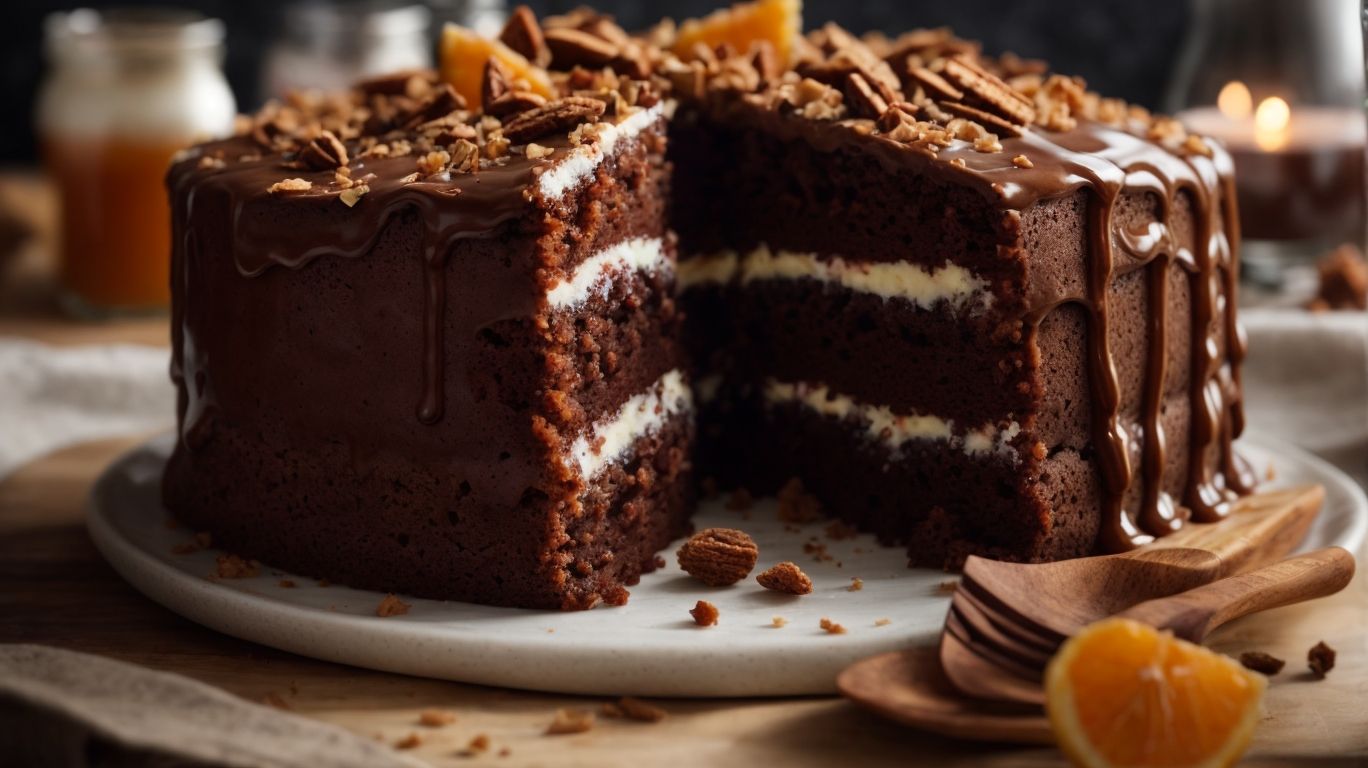
Credits: Poormet.Com – Bruce Rivera
Baking without vanilla extract offers a realm of flavor exploration and culinary adventure, inviting you to savor the diversity of vanilla-free delights in your homemade treats.
When you venture into the world of baking sans vanilla extract, you unlock a treasure trove of possibilities. By forgoing this ubiquitous flavor enhancer, you open the door to a myriad of creative flavor combinations that can elevate your culinary creations to new heights.
One of the key advantages of exploring alternative flavorings is the opportunity to customize your treats according to your preferences. Whether you opt for the richness of almond extract, the warmth of cinnamon, or the zing of citrus zest, each ingredient brings a unique dimension to your baked goods.
Embracing vanilla-free recipes allows you to stand out from the crowd and present your guests with unexpected, yet delightful, flavor profiles. Imagine the joy on their faces as they discover the innovative twists you have incorporated into familiar classics.
Frequently Asked Questions
1. Can I bake a cake without using vanilla extract?
Yes, you can still bake a delicious cake without using vanilla extract. There are many alternatives available that can provide a similar flavor to your cake.
2. What can I use instead of vanilla extract in my cake?
Some alternatives to vanilla extract include almond extract, lemon extract, or even maple syrup. You can also use vanilla bean paste or vanilla flavored sugar to add a similar taste to your cake.
3. How much of the substitute should I use in place of vanilla extract?
The ratio of substitute to vanilla extract may vary depending on the ingredient you choose. As a general rule, you can use half the amount of almond or lemon extract compared to vanilla extract. If using vanilla bean paste, use 1 teaspoon for every 1 teaspoon of vanilla extract.
4. Can I omit vanilla extract completely from the recipe?
Yes, you can omit vanilla extract completely if you do not have any substitutes available or if you do not want to use them. However, keep in mind that the cake may have a slightly different flavor and may not be as rich as it would be with vanilla extract.
5. Why would someone choose to bake a cake without using vanilla extract?
There are various reasons why someone may choose to bake a cake without using vanilla extract. Some people may be allergic to vanilla or simply do not enjoy the taste. Others may not have access to vanilla extract at the moment or may be looking for a healthier alternative.
6. Can I use imitation vanilla extract instead?
Yes, you can use imitation vanilla extract as a substitute for regular vanilla extract. However, keep in mind that the flavor may not be as strong, and you may need to use a slightly higher amount to achieve the desired taste.

